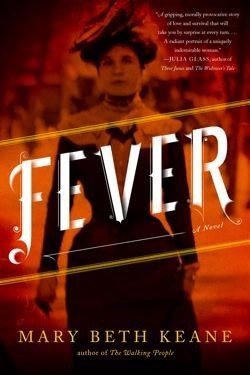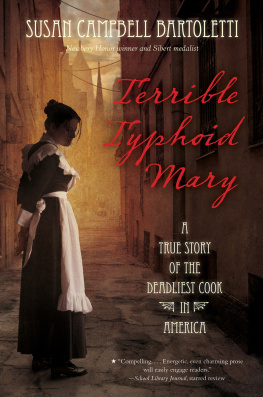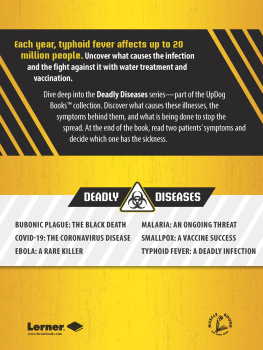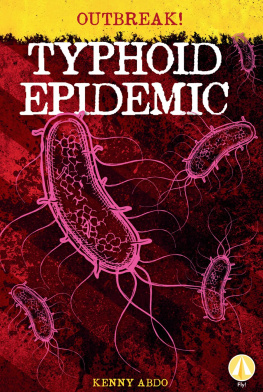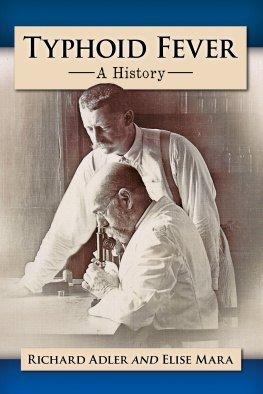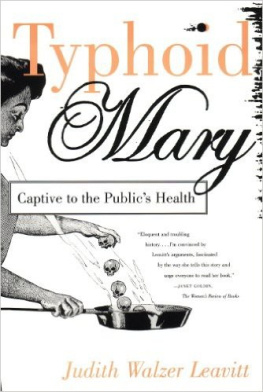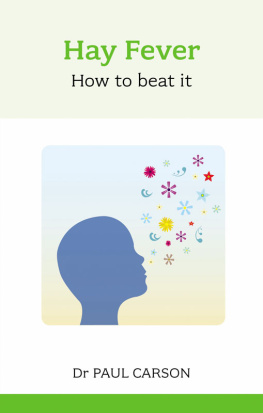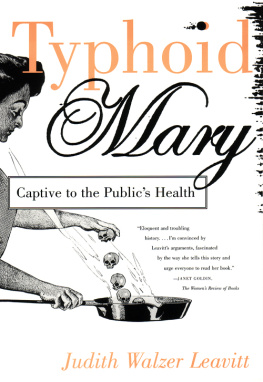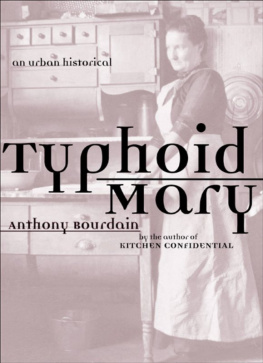TABLE OF CONTENTS
Guide
FATAL FEVER
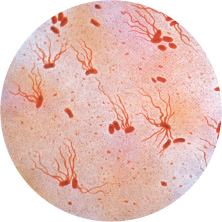
Typhoid fever is caused by
Salmonella Typhi, a rod-shaped bacterium that uses whiplike flagella to move.
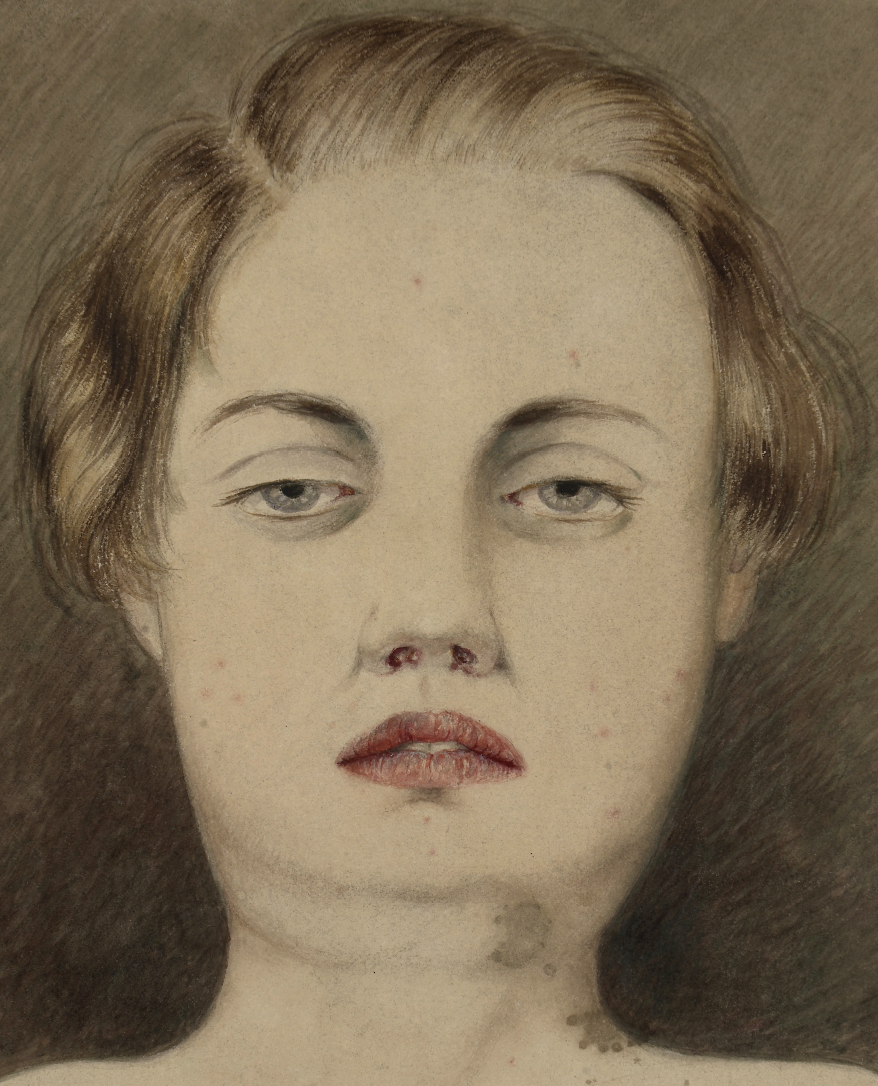
An 1882 painting of a typhoid patient shows her bloody nose and spots on her skin, symptoms of the disease.
FATAL FEVER
TRACKING DOWN TYPHOID MARY
Gail Jarrow

CALKINS CREEK
AN IMPRINT OF HIGHLIGHTS
Honesdale, Pennsylvania
Text copyright 2015 by Gail Jarrow
All rights reserved
For information about permission to reproduce selections from this book, please contact permissions@highlights.com.
Calkins Creek
An Imprint of Highlights
815 Church Street
Honesdale, Pennsylvania 18431
ISBN: 978-1-62091-597-4 (print)
ISBN: 978-1-62979-060-2 (e-book)
Library of Congress Control Number: 2014948476
Production by Margaret Mosomillo
For Tate, who knows a thing or two about sleuthing
Acknowledgments
T hanks to those who helped me research, write, and polish this book:
Dr. Eric Mintz, lead for the Centers for Disease Control and Preventions Global Water, Sanitation, and Hygiene Epidemiology Team, for graciously sharing his expertise, sending me relevant scientific papers, and checking the accuracy of the typhoid information in my manuscript.
Dr. Judith Walzer Leavitt, professor emerita, Department of Medical History and Bioethics, University of WisconsinMadison, who took the time to answer my lingering questions about Mary Mallon.
Dr. Mark McKinlay, director of the Center for Vaccine Equity, the Task Force for Global Health, for his assistance in getting answers to my technical questions.
Susan Soper, who helped me piece together details about the life of her great-grandfather George A. Soper.
Peter Dabback, science teacher in the Spring-Ford Area School District, Royersford, Pennsylvania, who connected me with typhoid fever experts.
The staffs at the Division of Rare and Manuscript Collections, Cornell University Library; the Newspaper & Current Periodical Reading Room, Library of Congress; and the Microforms Reading Room, Schwarzman Building, New York Public Library.
The entire team at Calkins Creek, who brought my manuscript to print. Im particularly grateful to Joan Hyman for her eagle eye. Special thanks go to Carolyn P. Yoder, my incomparable editor, for once again accompanying me on a journey into history.
Finally, I appreciate the support of my patient and tolerant husband, Robert Jarrow. He never once complained about my unappetizing typhoid fever dinner conversations.
GJ
1
HIDDEN
I am an innocent human being. Mary Mallon
E arly on a damp March morning in 1907, Mary Mallon answered the knock at the servants entrance of a New York brownstone house. She took one look at the visitors and lunged at them with her sharp fork. As they flinched, she ran toward the kitchen.
Mary knew why they were there. A few weeks earlier, a well-dressed man with a mustache had shown up, accusing her of outrageous and horrible things. Later, he followed her. Cornered her at her friends home. Acted as though he had the right to stick her with a needle and steal her blood.
Yesterday, a woman in a tailored suit and stiff collar had come to the kitchen. She claimed to have the authority to do exactly that and more. The woman refused to take Marys no for an answer. Now she was back with the police.
Mary was sure that this time, if they caught her, they wouldnt let her go. She should have disappeared when she had the chance. They had no right to threaten her or touch her body. Even if she was only a cook, Mary wasnt going to let them do it.
Picking up her skirts, she fled past the kitchen and down the hall.
Where could she hide? Mary headed for the back door. Frantically, she scanned the snow-covered yard for a hiding place, but she saw nothing. Policemen were looking for her inside the house and out on the street. She was trapped.
A high wooden fence separated the backyard from the house next door. If she could just get over that fence and into the neighbors yard...
A wooden chair pushed up against the fence would do the trick.
Thank Almighty God she had friends who would help. Would say that they had no idea where shed gone. Would point out a small outside closet under the neighbors front steps. Would pile some ash cans against its closed door after she climbed in.
Mary shut the door behind her and crouched down.
She didnt know it, but she wasnt alone in that cramped, cold closet. Deep inside her body, billions of deadly microorganisms were hiding, too.

The fates of three people collided at that New York City brownstone. The three had been born within four years of each other and had taken different paths to reach the middle of their lives. In late winter 1907, those lives changed forever.
For George Albert Soper, determined to establish his reputation, the event would add another triumph to boost his career.
For Sara Josephine Baker, attempting to make her mark in a male-dominated and often corrupt city government, it would bolster her efforts to gain respect and responsibility.
For Mary Mallon, struggling to support herself in an adopted country, her encounters with both of them would lead to a notoriety that has lasted for more than a century. The world would remember who she was long after it had forgotten the other two.
These three people were brought together by a dreaded scourge that left behind shattered dreams, broken hearts, and painful death.
TYPHOID FEVER.
2
GERM DETECTIVE
One very disagreeable fact about typhoid fever is that it is intimately associated with human excrements. William Sedgwick
D eadly diseases had affected George Sopers life from its beginning in 1870. Two months before George was born in Brooklyn, New York, his father died of tuberculosis, leaving a pregnant widow and two-year-old daughter.
When George was twelve, the German scientist Robert Koch announced his discovery of the tuberculosis bacterium, the microbe that had killed Mr. Soper and millions more. The medical community began to understand that other diseases, including typhoid fever, were also caused by germs that could be transmitted between people.
Lethal microbes had plenty of opportunity to spread as the population of the United States exploded. By the time George Soper turned thirty, he had seen the nations size double to 76 million as immigrants flooded in. Many of the newcomers settled in the fast-growing cities. In 1870, only 25 percent of the American population lived in urban areas. By 1900, that number had increased to 40 percent.
Crowded cities, like New York where George grew up, were grimy, stinking, unsanitary places. Raw sewage fouled the water. Mountains of spoiled food and garbage lined the sidewalks, rotting in the sun. Horses dropped 2,000 tons of manure on streets every day. The city was littered with dead and decomposing animals, including cattle, donkeys, dogs, rats, and more than 10,000 horses a year. Too many people lived crammed together in filthy, poorly built tenement buildings that had overflowing outhouses.


